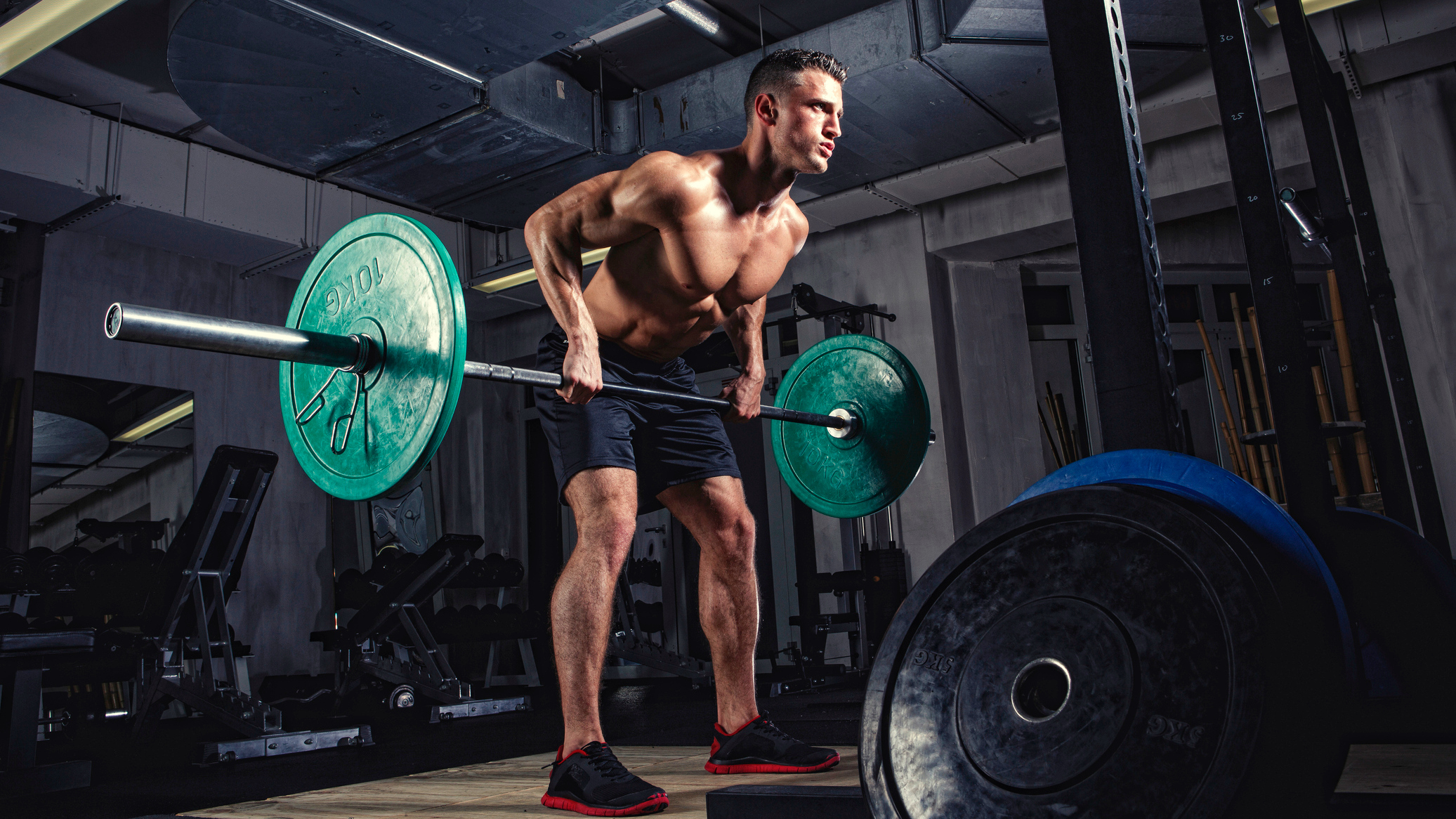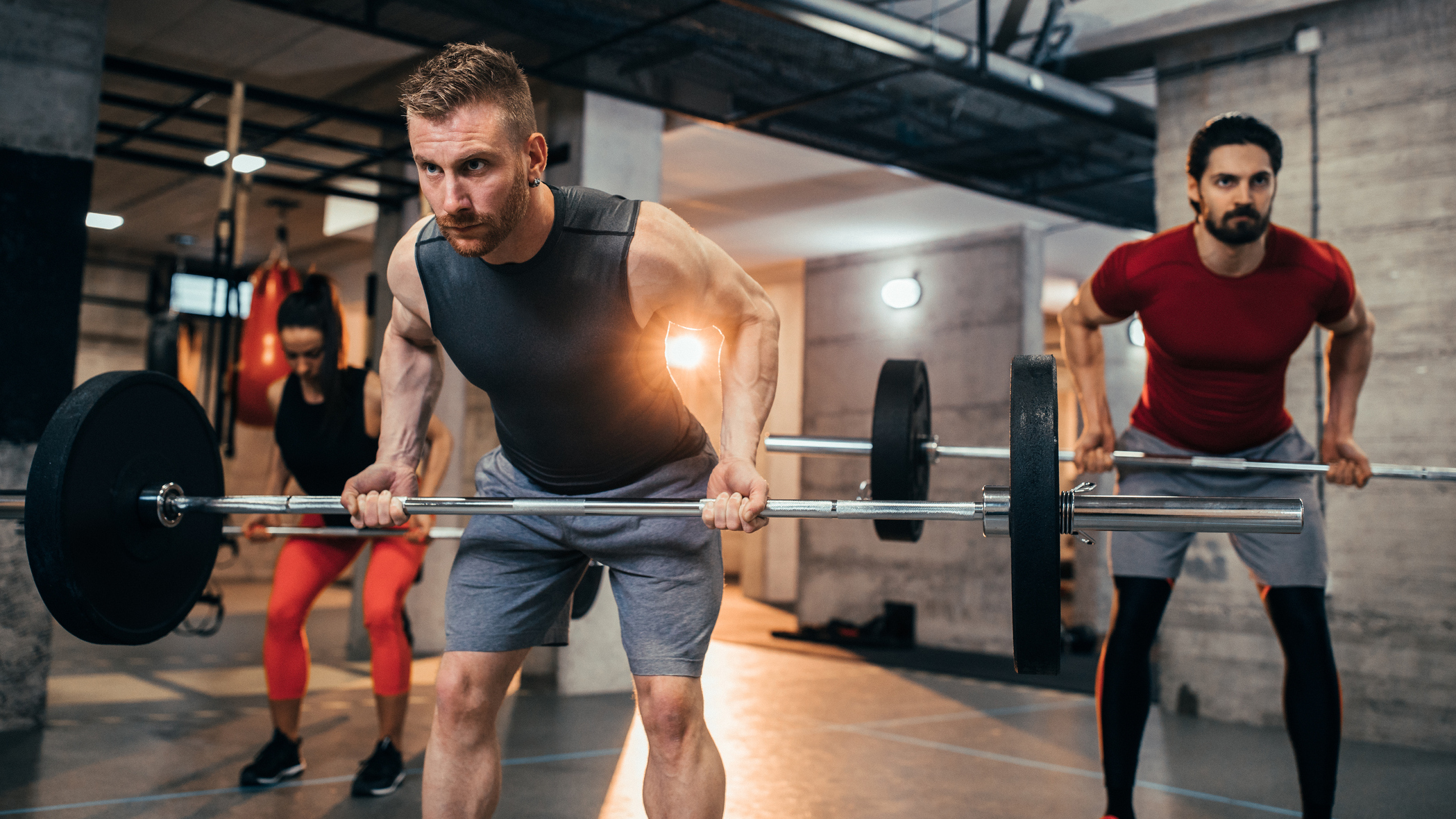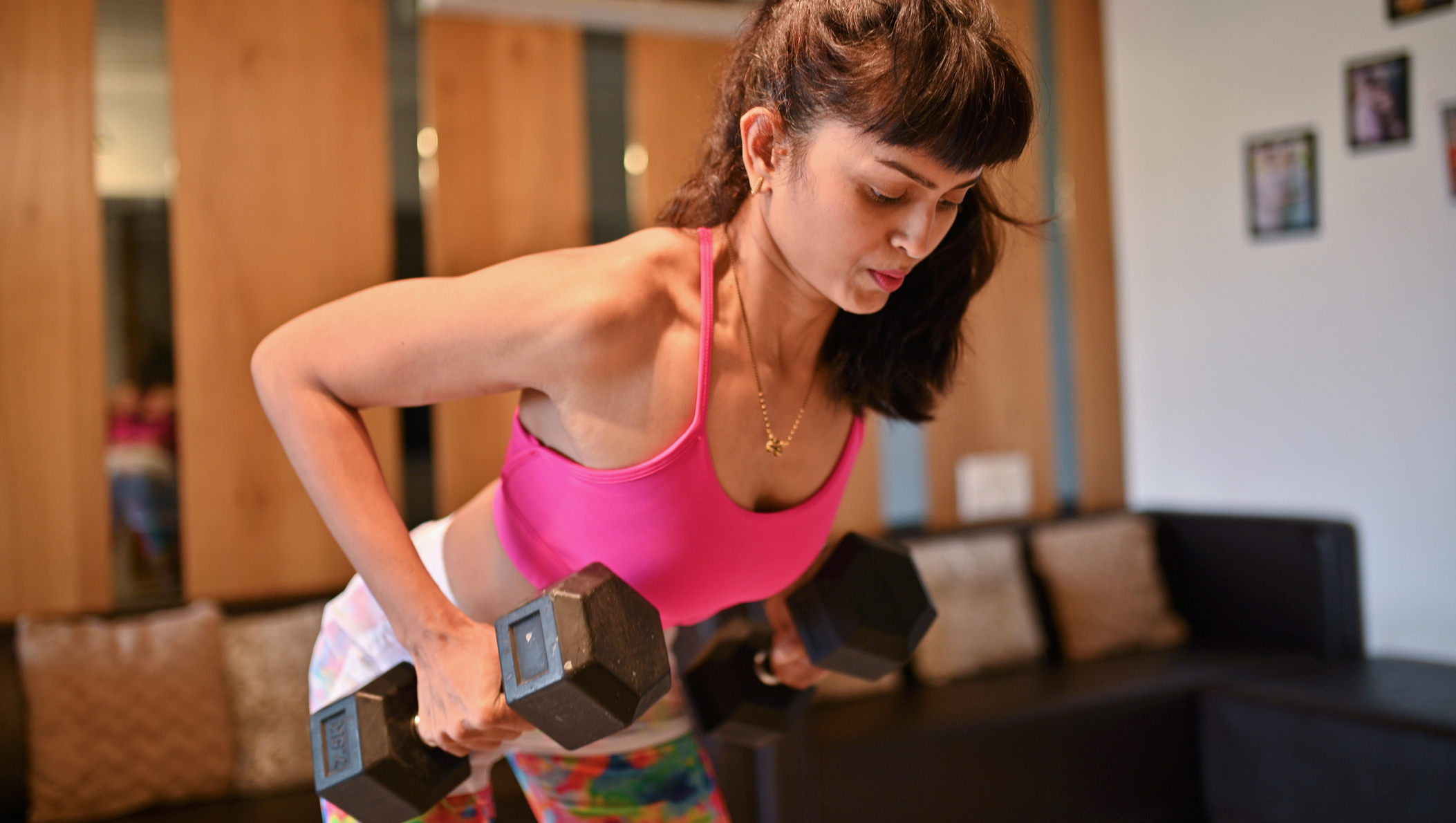Master The Barbell Bent-Over Row For A Bigger, Healthier Back
Use our expert form guide to one of the original big-muscle moves to add the barbell row to your training, and benefit from increased strength and better posture

There are a clutch of barbell exercises that offer quite staggering benefits to those who master them and the bent-over row belongs squarely in that pantheon. It’s a back exercise that you’ll find in any good push/pull workout plan or upper-body workout because it allows you to shift serious weight, and the bent-over position recruits more muscle groups to perform the movement.
But you’ll only enjoy those benefits if you perform the movement correctly, so here’s our comprehensive guide to the barbell row – benefits, form guide, variations and more – with expert advice from Wahoo Sports Science’s NASM-certified strength coach Jeff Hoobler.
Jeff Hoobler has more than 25 years’ experience as a cycling and strength coach. He is a certified strength and conditioning specialist through the US National Strength and Conditioning Association, and holds a degree in sports psychology and exercise science from the University of Kansas. He is also a USAC level 3 cycling coach, foundations training instructor and MAT (Muscle Activation Techniques) therapist.
Barbell Bent-Over Row Benefits
What muscles does the bent-over row work?
The two main active muscles are the lats and rear deltoids, making it a great exercise for building strength and size in these key pulling muscles in your upper-body.
However, because it’s a multi-joint compound exercise more muscle groups are brought into play. “As well as the two big, active muscles, the key ones supporting the movement are the hamstrings and spinal erectors, but they’re part of your whole posterior chain which is working to keep you stable in [the bent-over] position,” says Hoobler.
The barbell row, along with other compound lifts like the overhead press, barbell squat and deadlift, mirror fundamental movements in sport. That means strengthening the muscles that power the action can translate to improved performance on the field. “Whether it’s rugby, American football or soccer, these lifts can help,” says Hoobler. “Even in endurance sports, where folks say these lifts don’t have a place, they are actually quite important from a structural integrity point of view – being able to maintain posture.”
That benefit for your posture has applications off the field of play as well. If you have a desk job you may find your shoulders internally rotate, which results in tight pecs and a stiff neck, as well as weakness in the lower back. It’s a problem that’s aggravated if you add further stress on the chest and shoulders with endless pressing exercises. Adding the bent-over row to your weights session helps balance out your upper-body muscles.
How To Do The Barbell Bent-Over Row

Here’s a tip for getting into the starting position you won’t find in other form guides. “Start it from a rack if you can,” says Hoobler. Set the rack to around knee height and perform a rack pull so you’re standing straight, holding the barbell in front of your thighs with an overhand grip and hands shoulder-width apart. The next part of the set-up is essentially a Romanian deadlift. “Keep your chest up, back straight, and unlock your hips, sending them backwards to hinge your torso forwards slightly. Your knees should soften a little bit more than they do during a Romanian deadlift,” says Hoobler.
“Your back should form anywhere between a 30-45° angle [with the floor]; hinge at the hips to the point where you can’t maintain a neutral spine – that’s where you stop. If you get any rounding of the back, you get out of there. If you’re rounding your back, it’s going to put strain on your lower back that could cause injury.
“Then it’s time to perform the row. Hold the bar close to your knees, pull it straight to your bellybutton, then control it straight back down to the starting position.”
Sign up for workout ideas, training advice, reviews of the latest gear and more.
Barbell Bent-Over Row Form Tips
Think elbows
Once you’re set up for the bent-over-row – leaning forward a bit, bar in hands – think about pulling your elbows behind you, not pulling the bar up. It’ll help to activate your lats and keep everything tight.
Pause at the top
Most trainers will tell you that if you can’t stop at the top of each rep, you’ve picked a weight that’s too heavy. Touch the bar to your sternum, pause, and squeeze your shoulderblades together at the top of each rep. You’ll build better posture that way.
Stay strong
Many people will round their back and jerk the bar towards their midline using momentum, particularly towards the end of their set as they tire. “As your lats and traps fatigue, you’re going to be searching for other muscles to assist with the movement,” says Hoobler. “Make sure you keep a slow, steady pull upward rather than jerking or using your legs to initiate the lift.”
Barbell Bent-Over Row Variations
Reverse-grip bent-over row

By reversing the grip, you place more of a load on your lats and lower traps.
Dumbbell bent-over row

An excellent variation on the bent-over row is to sub out the barbell for a set of dumbbells. Having two weights requires a little more coordination, and, more importantly, stops you relying too much on the stronger side of your body for the entire row. Opting for dumbbells instead will help you balance out your strength on each side. Start with the dumbbells just below your knees and allow your wrists to turn naturally during the movement.
One-arm dumbbell row

This beginner row targets one arm at a time and is a good stepping stone to the full bent-over row if you’re struggling with the exercise. Put your right hand and knee on a bench, hold a dumbbell in your left hand and let it hang straight down, with your palm facing in. Row the dumbbell up, squeezing your shoulder blade in, then slowly lower it. Do all reps on one arm, then switch to the other side.
Once you’ve got the hang of the one-arm dumbbell row on a bench, you can increase the difficulty of the movement by supporting your body on a gym ball instead. This unstable surface will challenge your core muscle to keep your steady while you complete the movement, which should give you a stronger base when you attempt the barbell version.
Incline row

If you want to ensure you’re not rounding your back during your rows, try this variation. Set up the bench at a 45° angle and lie chest down on it holding a dumbbell in each hand, letting the weights hang down towards the floor. Row the weights up to your chest and squeeze your shoulder blades together, then lower them again. Make sure your chest stays in contact with the bench throughout so your torso remains in the correct position.
Pendlay row

This tougher take on the standard barbell row takes its name from Glenn Pendlay, the weightlifting coach who championed it. With the Pendlay row, you bend over so your back is parallel to the ground and lower the barbell all the way to the ground with each rep. Otherwise the form points are the same – overhand grip, shoulders squeezed together at the top of the rep, core braced. You will need to reduce the amount of weight you use with the Pendlay row because of the extra challenge involved in lifting the barbell from the ground with each rep.

Harry covers news, reviews and features for Coach, Fit&Well and Live Science. With over a decade of training experience, he has tried everything from powerlifting to gymnastics, cardio to CrossFit, all in a bid to find fun ways of building a healthy, functional body.
- Joel Snape
- Nick Harris-FrySenior writer
